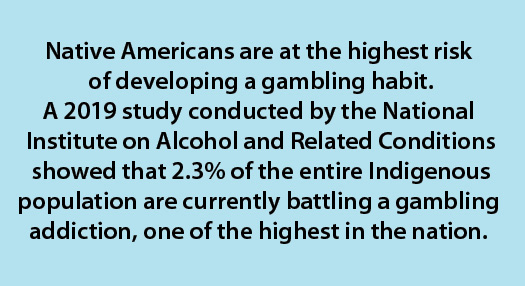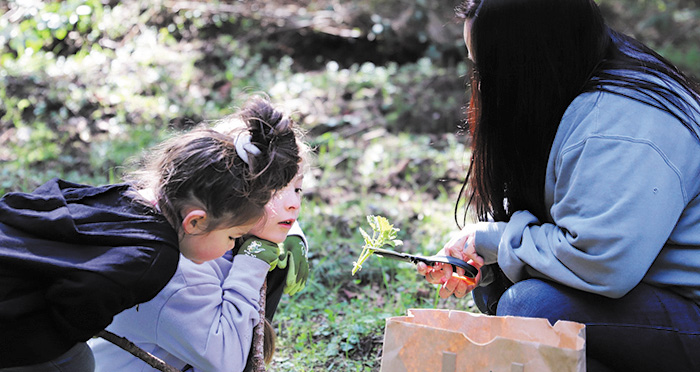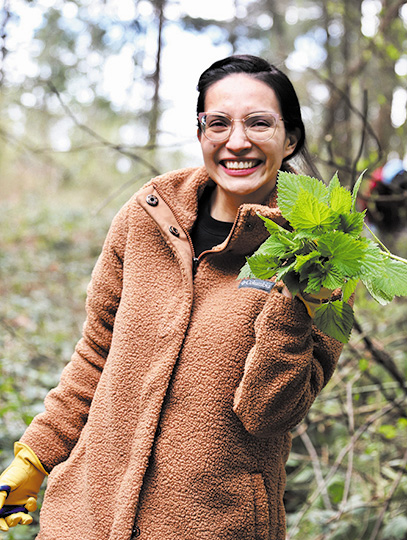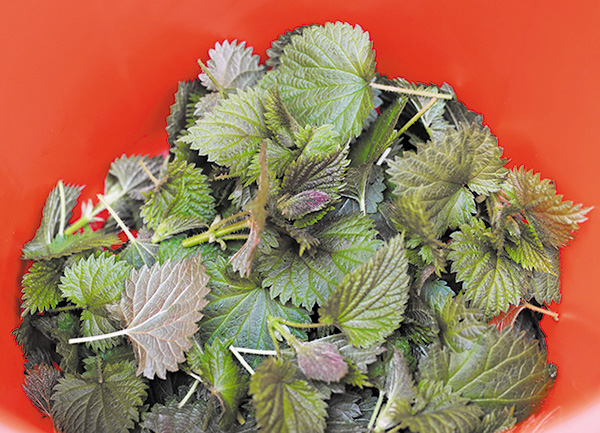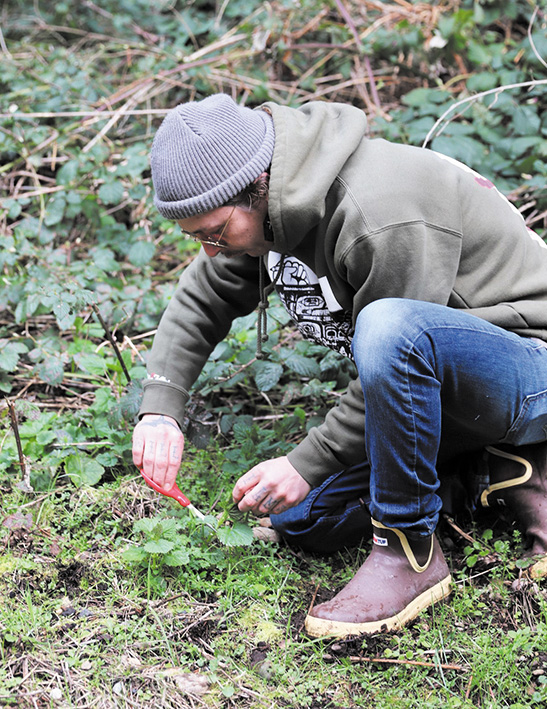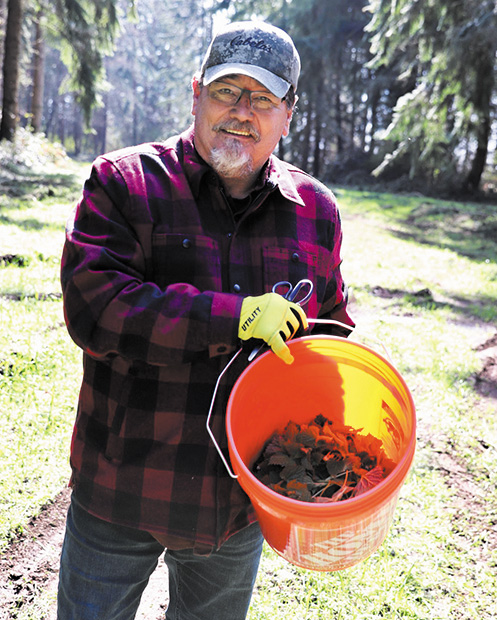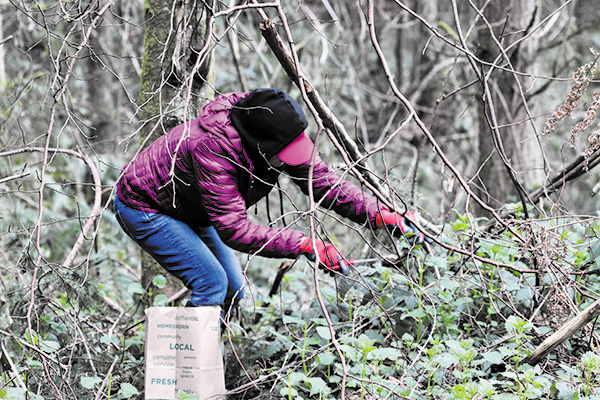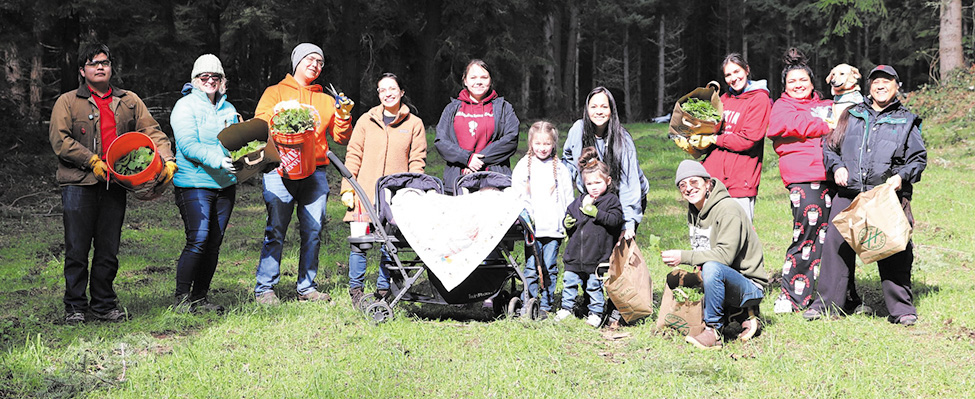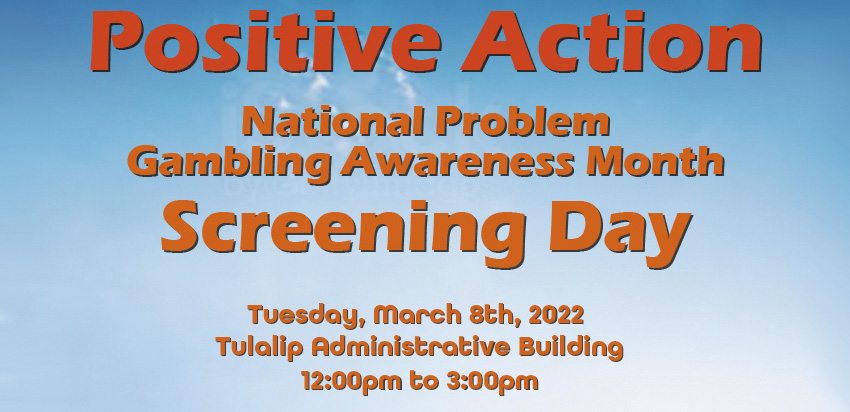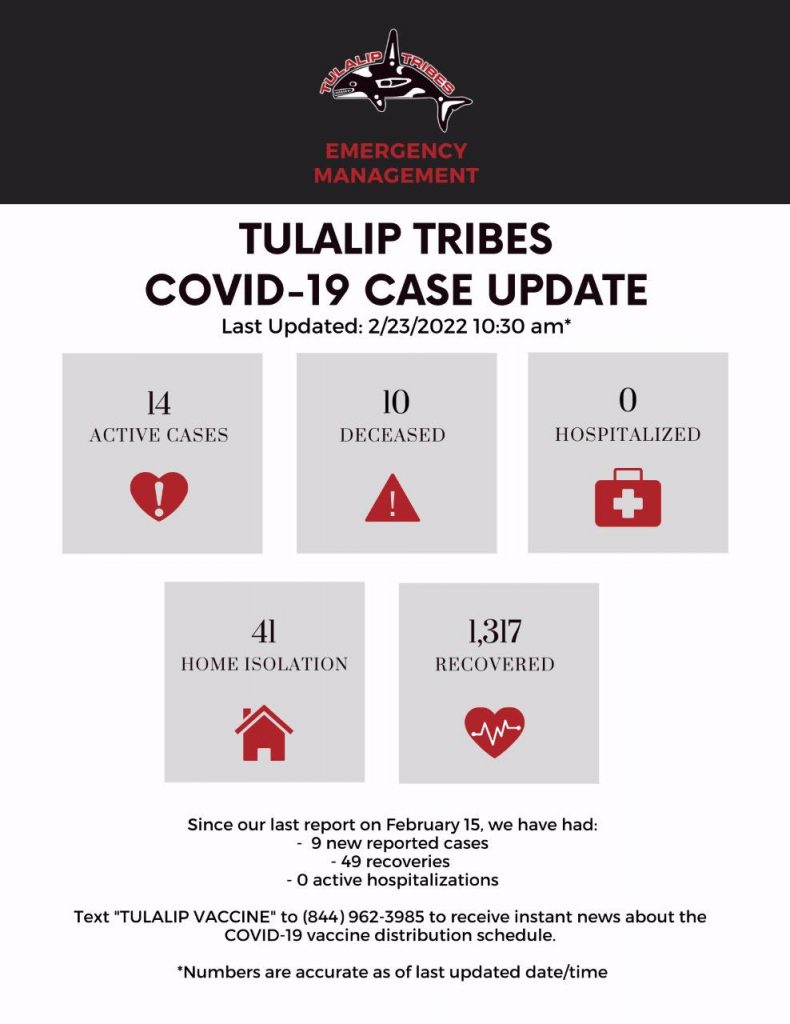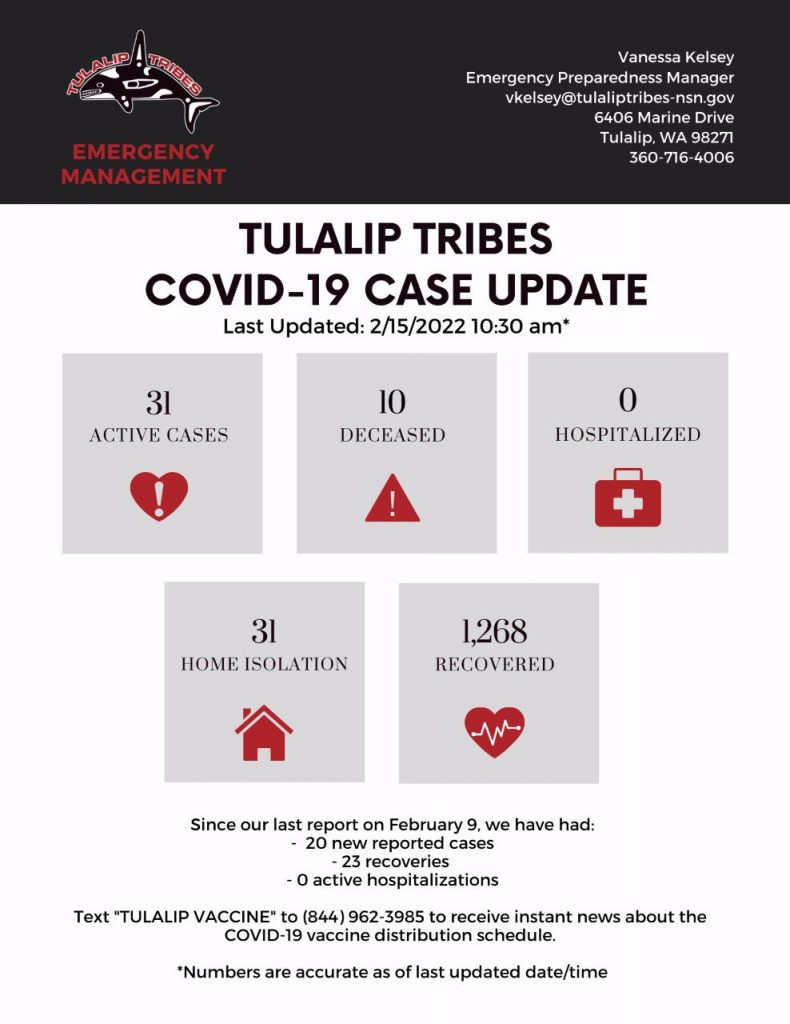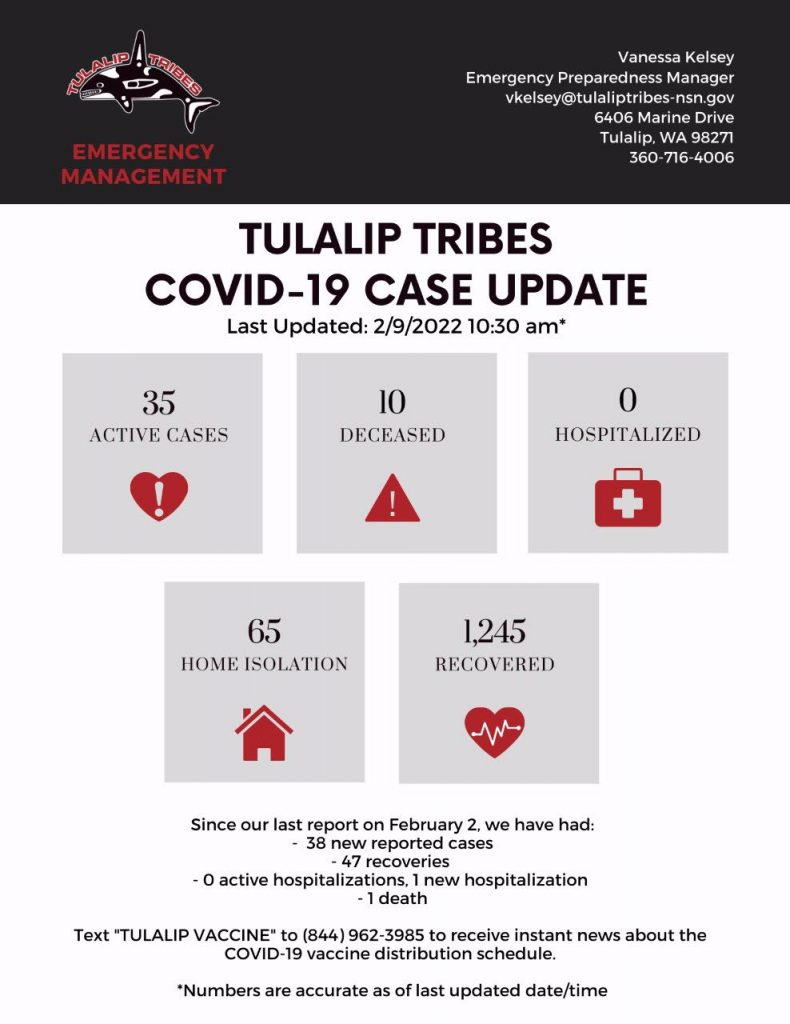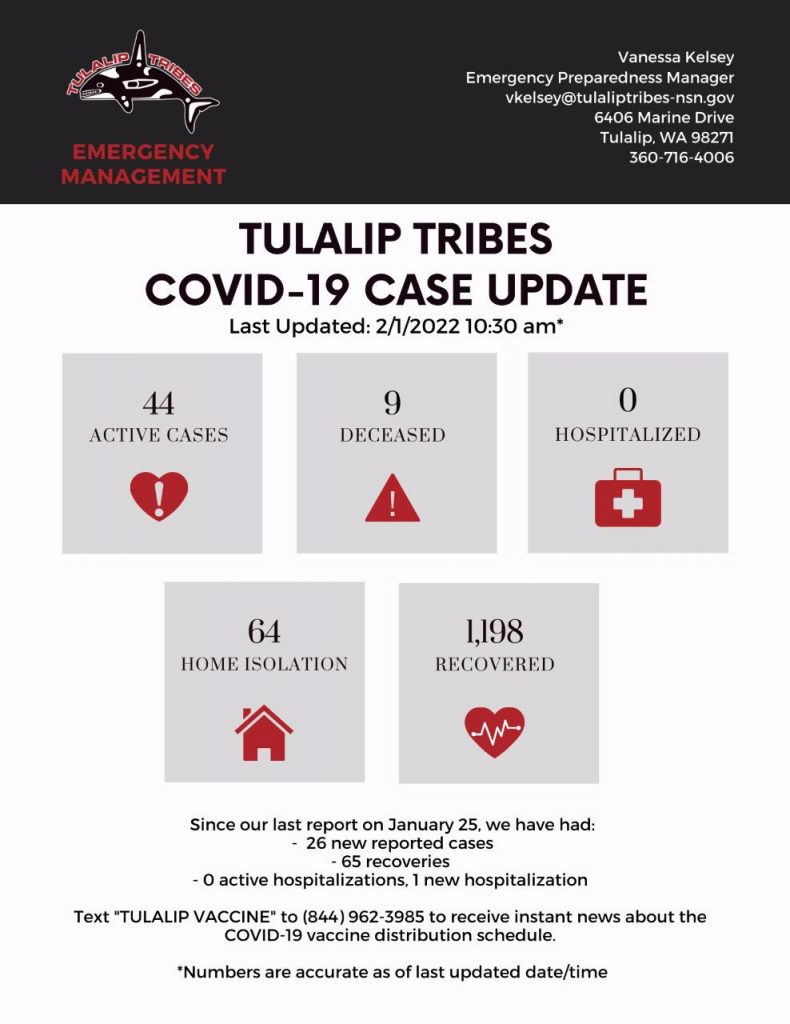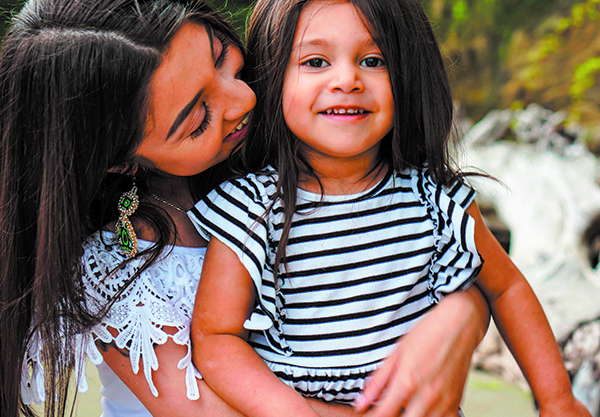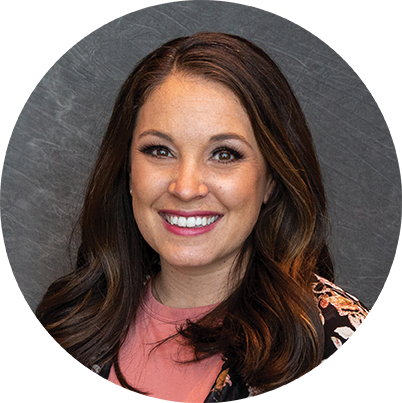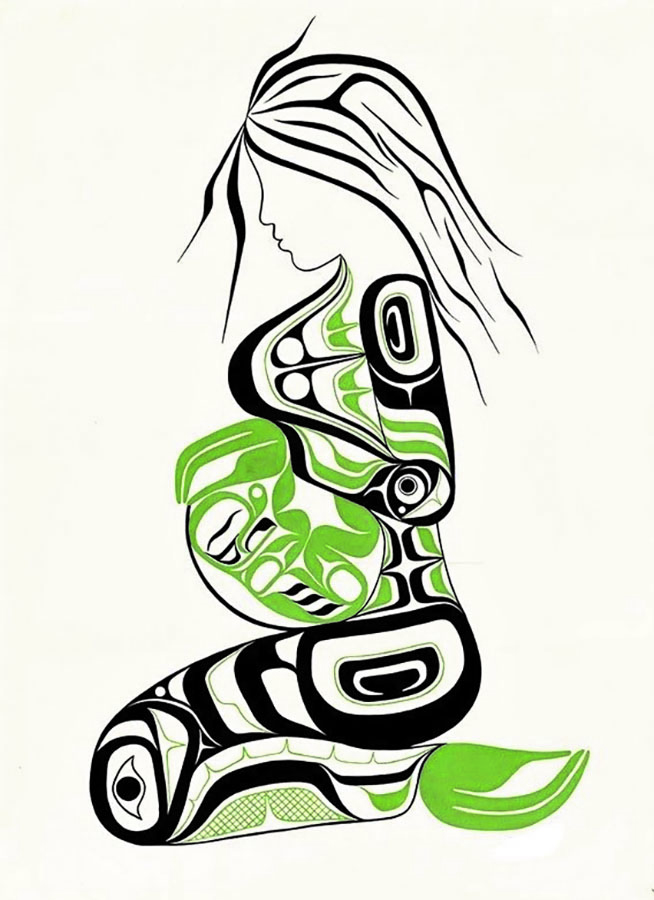Tulalip Problem Gambling program participants shares recovery journey during awareness month
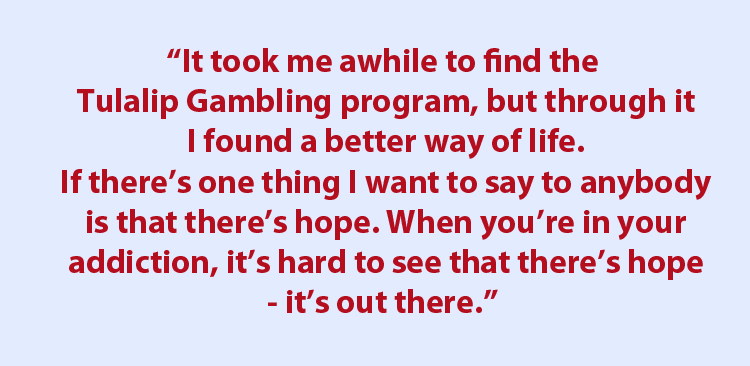
By Kalvin Valdillez, Tulalip News
“It’s an escape. It’s a high for sure. It’s a risk. I thrived for that high,” recalled recovering gambling addict, Walker. “It wasn’t the win; it was the anticipation of the win. What made it the most destructive addiction I ever known was that I could show up like a regular person and just sit down and all I had to do to make it happen was put money into a machine. It’s such an acceptable thing, but it’s so dangerously addicting. And once people are addicted, it’s really hard to tell that they are. There are so many ways to feed it. You can sell your stuff, you can cash out your 401k, you can get payday loans, you can do all these things in the hope of getting that next high, but because you’re addicted, it’s never enough. Like any addiction, you destroy yourself to feed it.”
An estimated two million American citizens meet the criteria for severe gambling addiction any given year, according to the National Council on Problem Gambling. Although that is only one percent of the entire population, that is still a lot of people who are more-than-likely quietly battling this dangerous disease as well as the many problems that occur as a result of the addiction.
Walker expressed, “Nobody knew I had a gambling problem. I’d have to make up all these excuses like why my cell phone got shut off. I’d tell all these lies with a smile on my face. I couldn’t control myself. I sold everything I could sell. I just didn’t have anything left and I couldn’t stop. There was no way out. But I maintained my job, I would put myself through all this turmoil and then I would go to work and pretend like everything was okay. There were people who loved me, but they didn’t know I needed help.”
Native Americans are at the highest risk of developing a gambling habit. If you have been following our coverage of National Problem Gambling Awareness month, you may be familiar with the following and shocking statistic. A 2019 study conducted by the National Institute on Alcohol and Related Conditions showed that 2.3% of the entire Indigenous population are fighting a gambling addiction, the highest percentage in the nation. Unfortunately, this three-year old study is the most current research, but after three-years of dealing with the global pandemic, that percentage is expected to be on the rise.
“I’ve had other substance abuse issues in my life,” Walker said. “In my youth I had trouble with marijuana, and in my adulthood, I had trouble with alcohol. I was into drinking pretty heavy, I already started some isolation in my life, I was single at the time. And I just started gambling. It started out pretty innocent, and it just progressed. What was interesting for me, as it progressed, my need for alcohol kind of fell away and gambling took hold. I got to a point where I was still drinking, but gambling became my main addiction. I wouldn’t drink when I gambled, and the insanity of it is, I looked at it as a benefit, as a positive early on.”
He continued, “I was gambling during the week, and it was just so progressive in my life. I went from gambling afterwork to where my weekend routine was getting up, throwing on my clothes and going out to gamble. I would get paid on Friday and I would go to the casino. I would either devastate myself with my losses or I would win. No matter which the case was, I couldn’t wait to get back there on Saturday morning. And my Saturday mornings were spent either trying to keep the high or get back my losses. When I would gamble, it was a reckless cycle. I was going to gamble until it was gone, and I was going to suffer until I could go back again.”
Throughout the month of March, the Tulalip Problem Gambling program takes part in a nationwide initiative known as National Problem Gambling Awareness month and hosts several events and gatherings in the Tulalip community. Originally, the campaign began nearly twenty years ago in response to the amount of sports gambling surrounding the NCAA March Madness college basketball tournament.
During awareness month, the Problem Gambling program and Tulalip News teamed up to share a series of stories of individuals who utilized and benefited from the program during their recovery journey. Walker is the third individual to share his story about how the Tulalip Family Services Problem Gambling program helped save his life through their intensive outpatient recovery care.
“I first heard about the Tulalip Problem Gambling program, I was just a little bit less than a year in recovery, I had 11 months clean time,” Walker reflected. “A friend of mine was in the program and she told me about her experience with it. I hadn’t heard of it and my background before that was only GA (Gambler’s Anonymous). So, I went into Tulalip Family Services and took an assessment, and I honestly didn’t think they would take me because I had clean time. My perception was that it was for somebody who was just beginning to get help with their addiction. I did my assessment with Robin and was admitted to the intensive outpatient program. That’s where my recovery really took on a bigger meaning for me, I can’t tell you enough my joy in the fact that I began to work on myself. I began to look at my past, my childhood and young adult life, and identified some of the triggers that led me to addictive behavior.
Right away when I walked through the door, there was an expectation of accountability – that was really big for me. And the homework. We would do in-class assignments but the real tough one for me, that really challenged me, is I had to write a timeline of all my major life events and along that timeline, write-in my addictive cycles. I was able to see that maybe I had some trauma in my life and that would result as the beginning of an addictive cycle.”
The Problem Gambling Program, led by counselors Sarah Sense-Wilson and Robin Johnson, provides a plan to recovery tailored to each individual’s needs while incorporating tribal culture, and a number of fun events and activities throughout the year. Several Problem Gambling participants have experienced a great deal of progress as they worked through the program, alongside individuals who are on a similar journey. Due to all the success stories that are a result of the Tulalip Problem Gambling program, many local tribes are now following their model and building programs on their own reservations to help their membership and fellow community members.
“Sarah was my counselor and one tool that she taught me was just to weigh everything out,” he shared. “It was how to deal with issues, how to deal with the problems in your life. For me, the main tools I walked away with were how to cope with life, how to avoid triggers, how to deal with triggers, and thinking things through before you encounter them.
There was that, and there was also an exercise that is called ‘Our First Step’, which is a no-excuses, no-reasoning account of our addiction. And what that means is that you don’t put down that you behaved a certain way because…. – you leave out the ‘because’. You just write down what you did. If you committed a crime, you write down you committed that crime. You don’t write down that it was because where you were at in that particular moment of your life, just the facts. It was really stunning – I’m going to come to tears a little bit – it was really stunning to read that back to myself. You don’t want to return to something when you look at it straight in the face and you quit rationalizing it.”
As you can gather, the Tulalip Problem Gambling program has been a reliable source to those attempting to put an end to their gambling addiction, helping those in recovery along their healing journey. Since its establishment, the program has served not only members of the Tulalip tribal community, but non-Natives, who are fighting a gambling addiction and live in our neighboring communities as well.
Said Walker, “I was in the program for a solid two years. I did finish the program, but I am still in contact with them. My life is nothing like it was before. I was in complete devastation. I lost everything. I had nowhere else to turn. I feel it was the grace of God that gave me recovery, and led me from GA to the Tulalip Problem Gambling program to where I am at today. It’s a completely different life. I am married today, I couldn’t even visualize for myself having a relationship, much less a marriage. And here I am, married to my wife who knows about my addiction. One of the things that recovery at the Tulalip Problem Gambling program taught was don’t keep secrets because secrets just give you an excuse not to work on yourself, not to face it. There’s real power in walking through a door when you are so screwed – there is nobody to understand you – that’s what you believe in your head. But, when you walk into Tulalip Problem Gambling program, there’s people who been there and understand and want to stand with you. That’s where you can have a fresh start.
You can’t do it on your own when you’re hurting, you’ll resort back to what you believe is going to fix you, which is your addiction. For me, I always felt that I could fix it with another win. The GA programs are really great, but they don’t allow you to talk about other opportunities during an active meeting. I think a lot of people who hear about the Tulalip Problem Gambling program they [assume] that it’s sponsored by tribal funds from the casinos, and they think it’s not good. But it is so the opposite. I encourage those who need that extra help to give themselves a chance, to work on themselves, to recognize that other recovery programs are great for support, but intensive outpatient treatment is what we need because we need to get better, so we don’t return to our addictions.”
The Tulalip Problem Gambling Program is hosting events throughout Problem Gambling Awareness Month, leading up to an in-person dinner event taking place at Tulalip Resort Casino on March 26 at 6:00 p.m.
If you or someone you love is dealing with a gambling addiction, or if you would like to find out more information about Problem Gambling Awareness month, please contact (360) 716-4304
*The following is a more in-depth look at Walker’s journey to recovery in his own words, which were shared and recalled upon through tears and heartbreak. Trigger warning – Walker speaks about serious issues including contemplating suicide.*
It was November of 2017; it was the first time I couldn’t pay my rent and that was a real shock to me. Basically, I fantasized about playing with my whole paycheck before I would even get it. I gambled heavily but I wanted to gamble even more, so I did just that. It had various outcomes and it caught up to me when I couldn’t pay my rent. I thought I was going to be evicted because I never been in that situation before.
I went to my landlord and to my parents and told them I had a gambling problem. That was my first step towards recovery, but it wasn’t true. It was false because that was it – that’s all I did, tell them. I got a stay on my rent and got caught up, but by December I was back in the casinos. It went from December, January and February, those three months my addiction took off. I couldn’t keep a paycheck for all those months.
It got so bad that I couldn’t eat. I didn’t have food on the table. My house was falling all around me. I isolated myself from my friends, family and kids. I wouldn’t let anybody in my house. I couldn’t take care of my dog. Some of my worst memories are using my free play to get a burger and tater tots and bringing it home to split it with my dog. And going to Fred Meyer with change and putting in the [Coinstar] machine so I could buy a bag of potatoes.
One weekend I went out and did it to myself again and I just lost it. I couldn’t do it again; I was completely out of steam, so I was making plans to take my life. As I was in my bedroom preparing to do just that, I thought to call my parents. I needed to be bailed out and they were able to come through for me by a miracle. That was it for me. That was my reset. I’m so grateful for that. I had to hit a really hard bottom in order to reset.
I was always in a pattern of trying to get back and I was always doing the things that come when you’re addicted to gambling. I was selling my stuff, I was pawning my stuff and trying to get it back out of pawn, I was engaging in high-risk loans. I developed rituals and would only go to one casino, I felt that was the place where I could be successful – it was the Quil Ceda Creek casino and sometimes I would go to the big casino if I was ahead. I didn’t really go to other casinos in the area. I was physically addicted, later when I was trying to find recovery, I slipped a couple times. Finally, I banned myself and that really helped.
Banning myself from the casinos was huge for me because after I hit bottom, I turned all my finances over to family and I still wasn’t in any recovery program, I just separated myself from cash. My parents would give me forty or sixty bucks and I would just battle – I would drive circles in Everett not knowing what to do. I had a social worker assigned to me because I was going to take my life. I told her one day, “when I’m done, I’m planning to go to the casino”, and she told me that I needed to go to a meeting. That’s when I found GA and later found the Tulalip Problem Gambling program.
GA is nationwide and they have a website where you can find active meetings and you just show up. But the difference for me, between GA and the Tulalip Problem Gambling program, is with GA you show up and there’s support for you, but you have to find the help yourself. Where with the Tulalip Problem Gambling program, I walked through the door, and they helped find the help I needed. They are professionals and there’s accountability, that GA doesn’t offer.
It took me awhile to find the Tulalip Problem Gambling program, but through it I found a better way of life. If there’s one thing I want to say to anybody is that there’s hope. When you’re in your addiction, it’s hard to see that there’s hope – it’s out there. That’s the great thing about the program, Sarah and Robin facilitate a lot of hope through the Tulalip Problem Gambling program.
